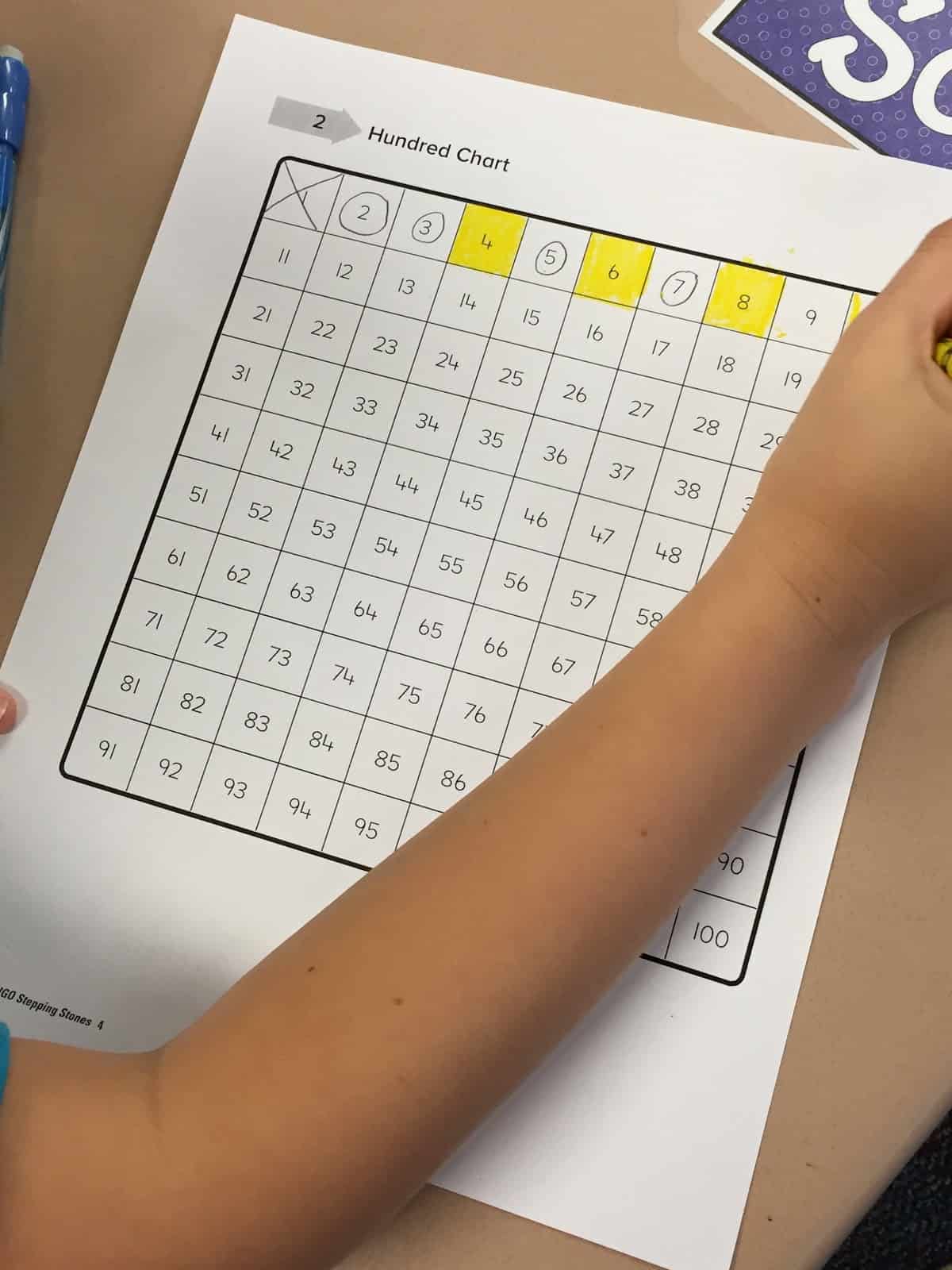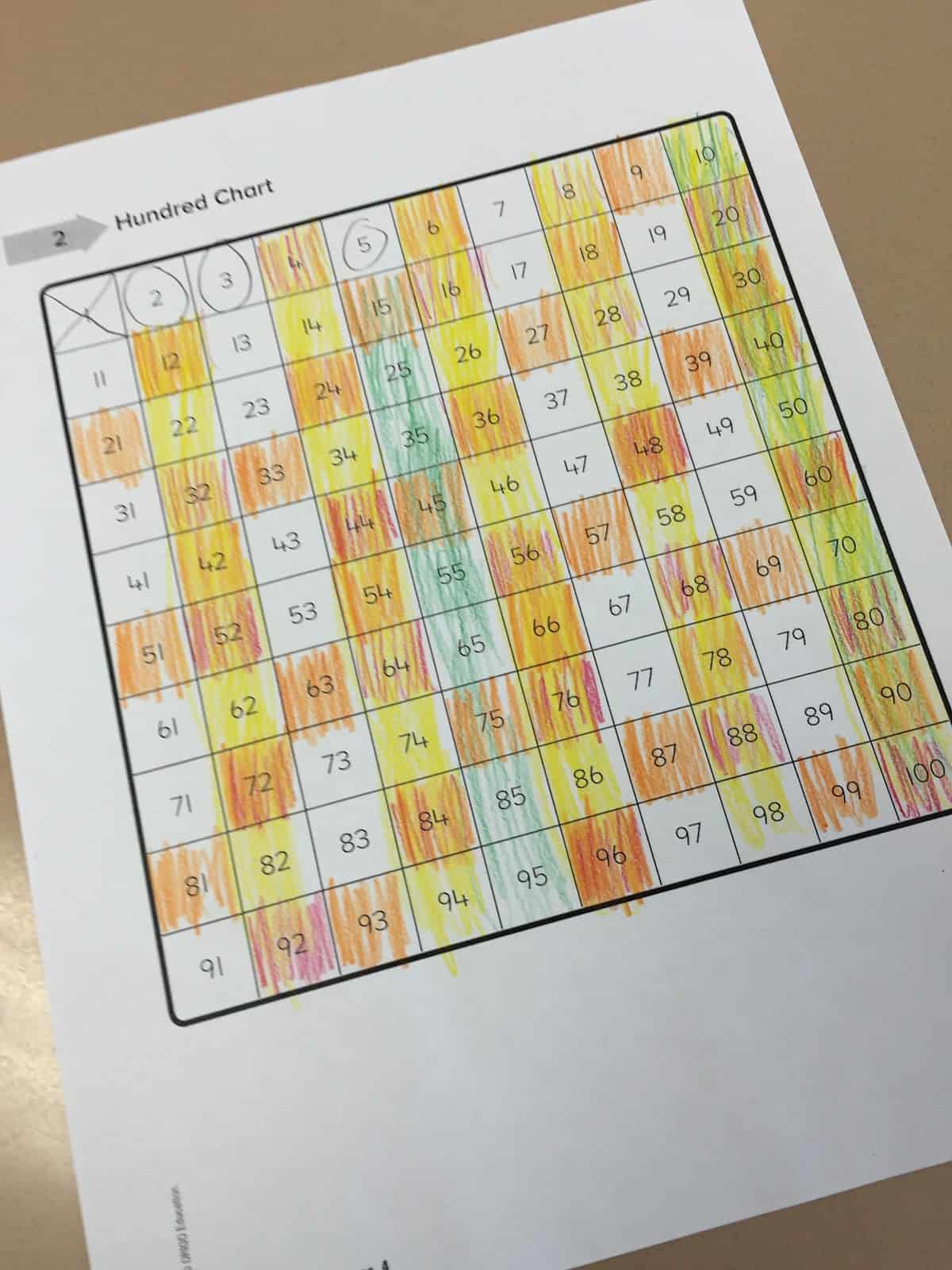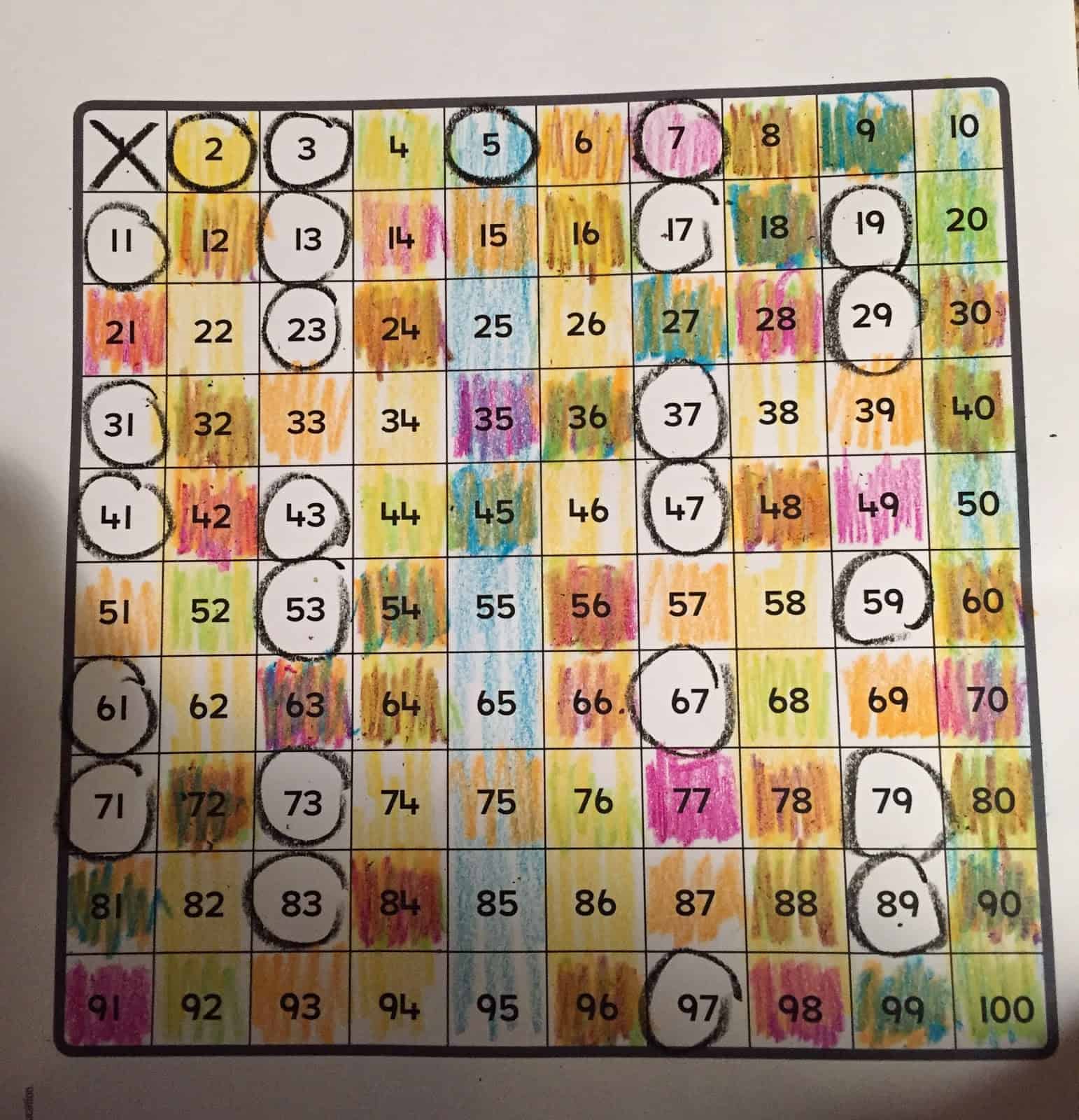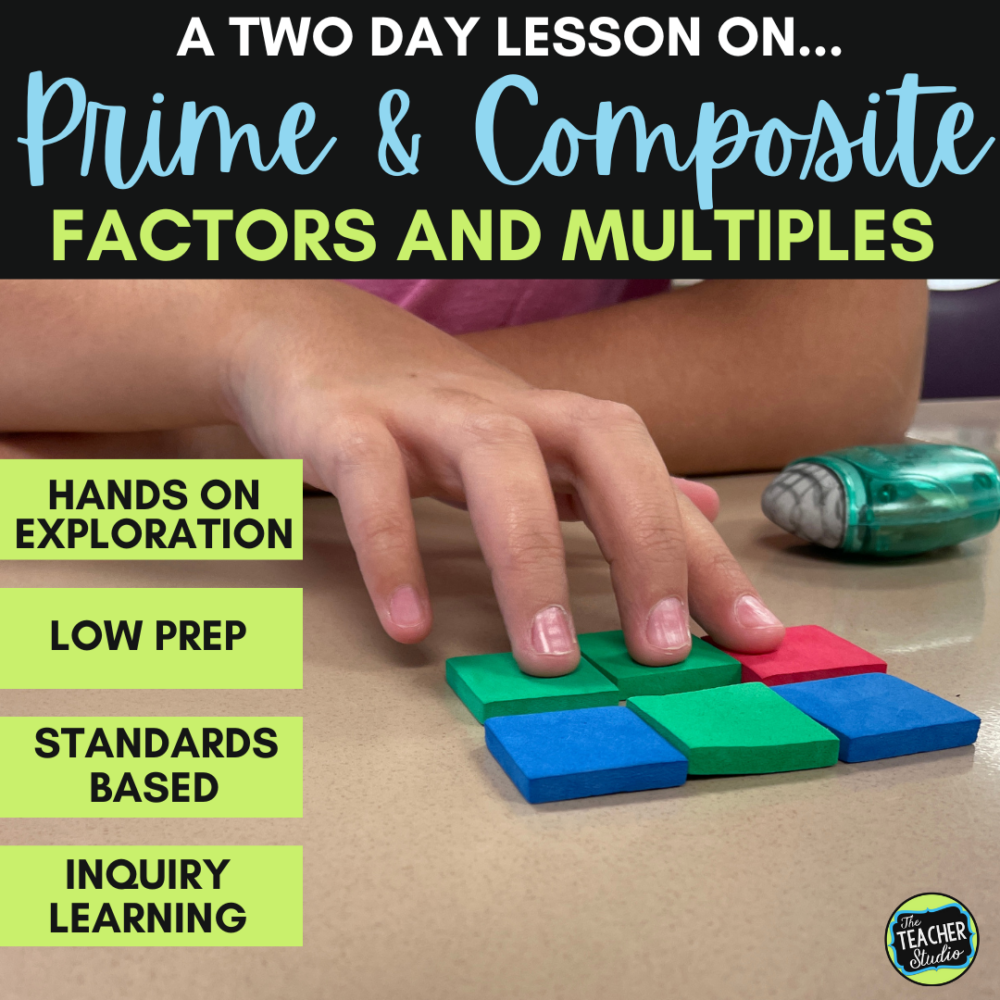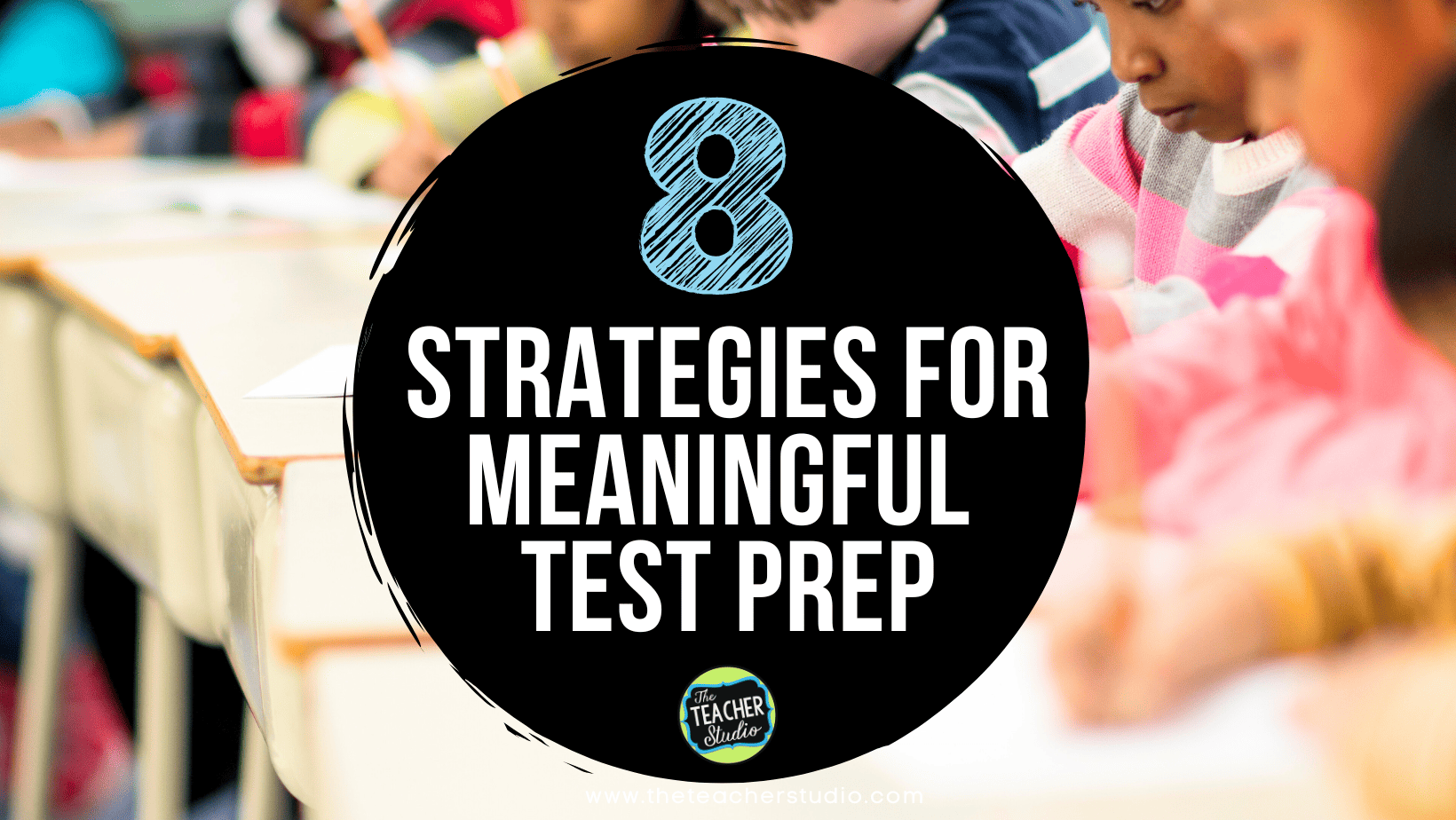One thing that I know to be true is that math is full of patterns–and prime numbers can be studied when looking at patterns of multiples. The more we can clue our students into hunting for patterns and looking for “structure”. As elementary teachers, we are helping students develop a foundation of mathematical thinking that will take them from the most basic of concepts to the most complex. This concept is so critical that the Common Core and other sets of rigorous standards have issued statements about its importance.
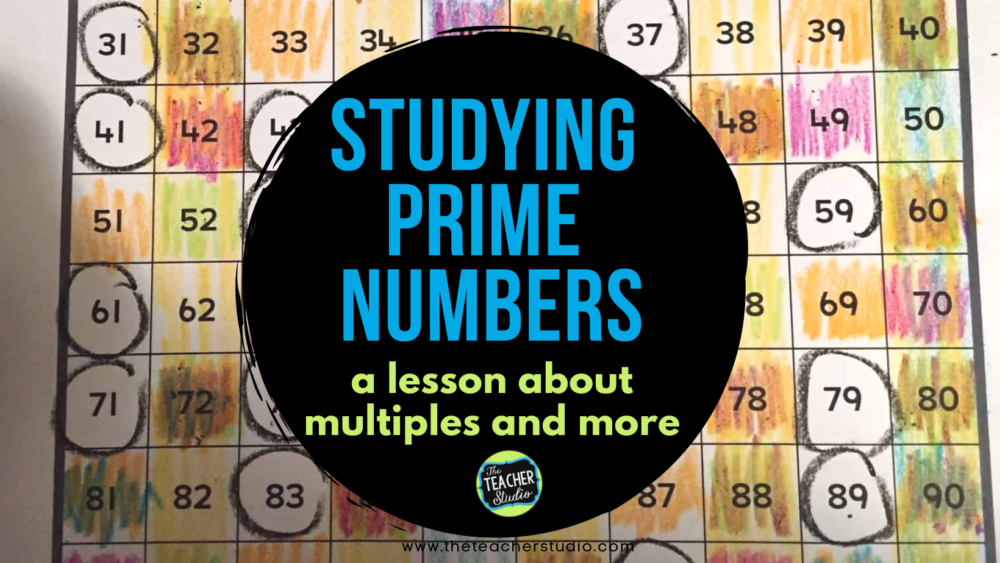
Check it out!
Providing students with explorations that give them opportunities to notice patterns, discuss their findings, and devise their own patterns can help them construct a deeper understanding of math concepts.
Recently my students were ready to tackle a few lessons about factors and prime numbers, and I wanted to make sure they they had the chance to really play with the numbers 1-100 and see what patterns they could find. We had some great explorations with tiles and arrays, so I told the students to cross off the 1 (1 is neither prime nor composite) and we circled 2, 3, 5, and 7 as those arrays that only had ONE way to build them. I explained that, by definition, those numbers are “prime” and only have 2 factors. We then set off on a quest to narrow down our number grid to find what other numbers had only two factors!
Quickly, we recorded that the even numbers all had “2” as a factor so we shaded those in yellow.
We then used orange to shade in our multiples of 3…
and we kept on going!
Gradually we used more and more colors to highlight our “multiples”!
We finally got to the point where we found all our prime numbers, noticed what numbers had a BUNCH of factors, and saw how many patterns our number system has!
Want more about prime numbers?
I’ve included a similar activity in my fun prime and composite number resource! Check it out to learn more!


